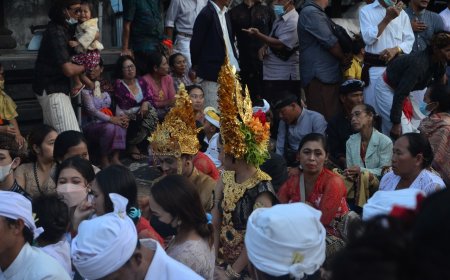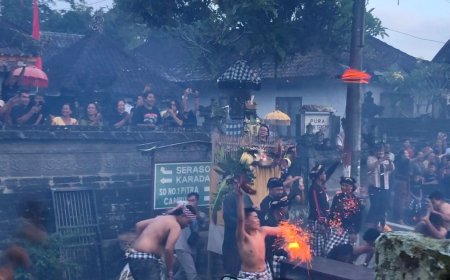The Sanghyang Penyalin Dance
The Sanghyang Pelipin dance is believed by the community to exorcise evil spirits. The Sangyang Penyalin dance is always present at every Pujawali in Pakraman Pancasari village. This is because people make the Sanghyang Penyalin dance sacred and believe this dance to repel evil that disturbs the welfare of the community. The people of Pakraman Pancasari village believe that there is power stored in the rattan which has been consecrated and then danced

Pancasari – Bali is indeed known for its diverse and unique traditions. Each tradition has its own meaning, and every community considers it a heritage from their ancestors that must be preserved.
The Sanghyang Penyalin dance in the pakraman village of Pancasari is a dance that is sacred to the local community and is still maintained as an integral part of religious ceremonies. The presence and performance process of the Sanghyang Penyalin dance in the pakraman village of Pancasari, Sukasada Subdistrict, Buleleng District, takes place at Pura Dalem and involves a procession, accompanied by the singing of dharmagita, especially the sanghyang chant.
The Sanghyang Penyalin dance is also performed during specific temple ceremonies. The preparations for the Sanghyang Penyalin dance performance include: (a) segehan: white, red, yellow, black, and multi-colored; (b) tetabuhan: new water, tuak, arak, and brem; (c) canang: canang sari and buratwangi; (d) banten gebogan; (e) pejatian. The function of the Sanghyang Penyalin dance performance in the Bhuta Yadnya ceremony serves as a means to ward off misfortunes or to drive away Bhuta Kala that disrupts the welfare of the community. The Sanghyang Penyalin dance in the pakraman village of Pancasari is very unique and distinctive. It involves the use of penyalin (rattan) which is an inanimate object, but after being consecrated, it becomes animated as if it has a soul/spirit.

Educational Values contained in the Sanghyang Penyalin dance; Ethical Values, Aesthetic Values, and Religious Values. The villagers of Pakraman Pancasari believe that there is a hidden power within a 6-meter-long rattan that is pulled. Thus, the Sanghyang Penyalin dance is believed by the community to repel evil spirits. During the performance of the Sanghyang Penyalin dance, it is quite different from other Sanghyang dance performances. Usually, in the general Sanghyang dance, the dancers go into a trance. However, in the Sanghyang Penyalin performance, the Penyalin (rattan) which is an inanimate object becomes animated as if it possesses a soul or spirit.
The Tri Hita Karana values contained in the Sanghyang Penyalin Dance can be seen from how this dance is presented as a form of human pleading to avoid disaster (resist evil). Sanghyang
The Copy Dance has a function as a cultural heritage both in terms of dance and art music that must be preserved by the younger generation. Social Function invites the Pancasari Village community to work together. Sanghyang Copyist Dance also has a religious function which contains belief in God Almighty. That a form of implementation of Tri Hita Karana values in Sanghyang Penyalin The dance can be seen from preparation for the performance to the end of the performance Its performance is proven by the presence of trance in the rattan (spinner) used during the show. There is social interaction between the entire village a society characterized by good performance and smoothly. The Sanghyang Penyalin dance in Pakraman Pancasari village embodies the following educational values

Aesthetic Values,
Religious Values,






























































